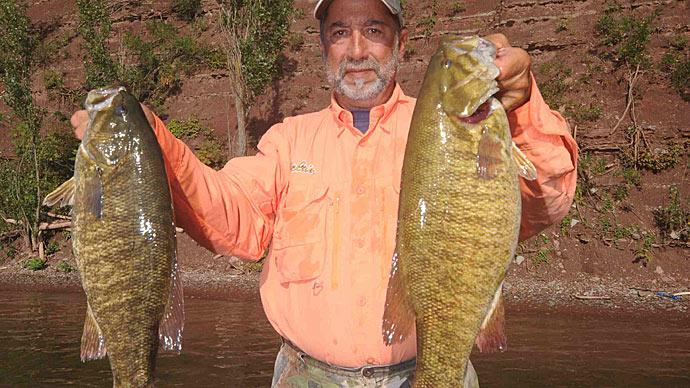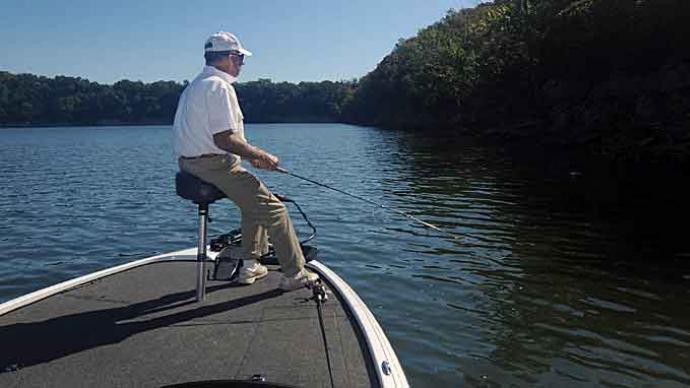
Part of what makes soft plastic baits so effective for bass fishing is that they can be rigged in many ways. How you rig them onto your hook or jighead makes them versatile – they can be fished everywhere and around all types of cover. While many rigging options exist, three are some of the most versatile and easy to use.
Longtime professional angler Todd Faircloth says that the drop-shot, wacky, and Texas rig can be used by everyone from someone just getting started to a champion bass angler like himself. He shared some advice on where to fish them and some of his favorite bait styles for each of them.
Drop-Shot
When beginning the conversation on different bass fishing rigs, Faircloth wanted to start with the drop-shot, as he believes it's one of the most versatile rigs out there.
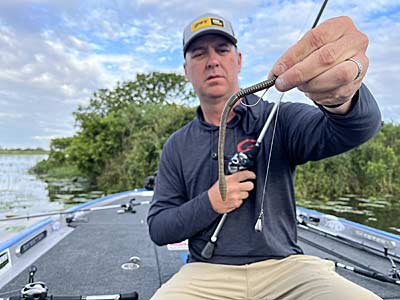
"It's great for the beginner or experienced angler and a critical rig for all bass fishermen," he began. "It's so versatile that the only time it won't work well is muddy and high water. Most people think you must have clear water and use spinning gear and light line, but I use it many other ways."
His typical setup is spinning gear with light line, but he will also fish a beefed-up "power shot" with heavier equipment and a baitcast rod. No matter how he's fishing it, one thing that he thinks is often overlooked is leader length.
"It's the biggest question I get, and I think I've come up with a good system," he said. "For smallmouth, I like a longer leader because they rely on visual feeding, and you can have a longer leader around 2-foot and let your line slack, and the bait will fall further, giving them longer to see it and come to it. Then, you can pick up the slack and do it again. I'll use a much shorter leader for largemouth, and it's generally 12 inches or less."
He also typically varies his weight and hook size, primarily based on the conditions. "A good starting point is a ¼-ounce weight, but I'll go to a 1/8-ounce when fishing shallower water," he said. "If I'm fishing somewhere with a lot of current, I'll go up to a ½-ounce weight. I prefer a size 1 round bend hook for hooks as much as possible and Texas-rig the bait on my drop-shot. I think you land more than when using a small drop-shot hook."
When it comes to baits, there are many options. "I use many different baits depending on the species," he said. "For smallmouth, I like the Strike King Z-Too in both sizes as well as the Half Shell and Dream Shot," he said. "But, a good all-around worm you can fish for all species is a slender finesse worm like the Strike King Filler Worm. It's got a lot of action, and you get a great hookup ratio when using a worm like that."
Wacky Rig
The wacky rig is simple but works wonders. Hook the bait in the middle and let the action of the soft plastic do the work. You can also insert weights into the end of your baits to create a Neko Rig, allowing you to fish deeper water effectively. Faircloth says it's a rig that nearly always works regardless of how you fish it.
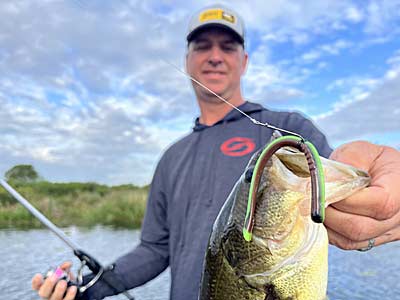
"The whole key is the shimmy of the bait," he said. "When you have it weightless, the fall will be slower, naturally, but that's what gets the fish's attention. If you add weight, you'll get more spiraling action as it falls – there are many ways to fish it. It also seems like the more action you impart, the fewer bites you'll get, so I always try to let the bait do all the work as it falls on a slack line."
He prefers a soft plastic stick bait like the Strike King Ocho but says any straight worm will do. "Some of the longer finesse worms are good with the technique, and all I'll do is get a size 1 or 1/O round bend hook in the middle. That makes it so good for beginners - it's easy to use."
The bait can be fished weightless, but Faircloth often inserts a nail weight to allow the bait to sink faster. "I normally do that in deeper water and when the fish are looking down to feed," he says. "There are times when bass are always looking up, like when they are guarding fry, and that's when a weightless bait will be much better."
Texas Rig
One of the oldest rigs in bass fishing is the Texas rig, with a bullet-shaped weight sliding in front of it. The rig is so effective because it keeps the hook point protected from snags and safely inside of the bait, and while it's been around for decades, Faircloth says it's still as crucial today.
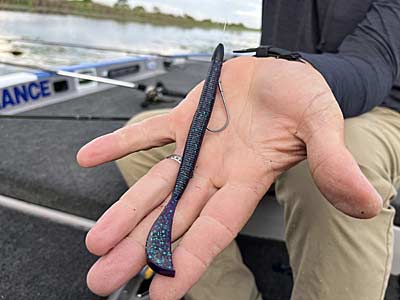
"It's so great because it's so versatile, and you can fish one in 6 inches of water or down 30 feet or more if you want to," he said. "The main thing is picking the right weight size, and my rule of thumb is to use a smaller weight when the water is cold and heavier as the water warms up. It's the same as how I pick my jigs because when it's cold, everything moves slowly. As the water gets warmer, everything moves faster, and you want a heavier weight to trigger a reaction."
For worms, he uses a plethora of them. "Anytime I'm around grass, I like a worm like the Strike King Cut R Worm," he said. "You can go anywhere with that worm and catch bass with it. It's great fishing the inside and outside lines of grass, but you can fish it around rocks, docks, and anywhere else. Another good one I use a lot is the Strike King Ocho, and I'll use a ribbon-style worm like the Zeus worm often in the summertime when I'm fishing offshore brush and the outside of weedlines."
Fishing with soft plastics is a significant part of bass fishing because they work so well. Deciding when to use different rigs depends on where you are fishing, but thankfully, these three rigs will work just about everywhere.
BassResource may receive a portion of revenues if you make a purchase using a link above.



